An Instrument of Nuance
A Review of the 2012-2014-Era Fender American Standard Telecaster
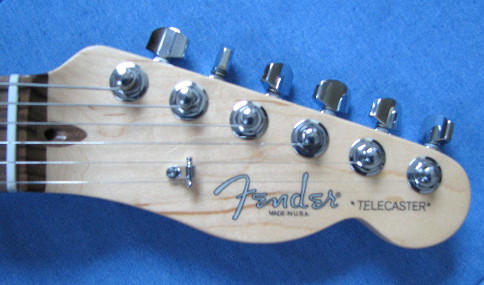
As ubiquitous as Fender Telecasters are, I suppose it is a rather odd thing for me to have played for decades, including playing studios sessions, but to have never owned a Tele. But there it is. I began using humbucker-equipped, Gibson-scale guitars early on and only later began adding other types. Now, I have been considering adding a Telecaster for a long while to round out the little quiver of guitars I keep for sessions. I've had a strat type for a while so I suppose I just got around to the Tele later in the game. Then recently, a forum user friend gave me a little inspiration when he picked one up and described it in a post. So anyway, one way or another, I found myself intrigued enough to start looking at them again in earnest. I started by setting a goal to find one with the "classic Tele sound," whatever that was. My first move was playing through the line including the Squires and various Fender model levels including the American Deluxes. I eventually began to zero in on the American Standards because of their feel and sound. By a process of listening and playing everything at hand I began to narrow down the specs that would suit me. I wanted the Tele "spank" but I didn't want the thing to be TOO country, thank you very much. I finally came to the conclusion that I wanted an alder body, a rosewood fingerboard, and single-coil pickups. I was hoping for plenty of sustain with a reasonably short drop from the attack phase to the sustain phase. After a few weeks I found a particular guitar I liked at the local Guitar Center. I've got a pretty good relationship with my local store so I went in a few times to check it out.
From the examples I played, this Tele was the most comfortable and most easily offered the sound I wanted.
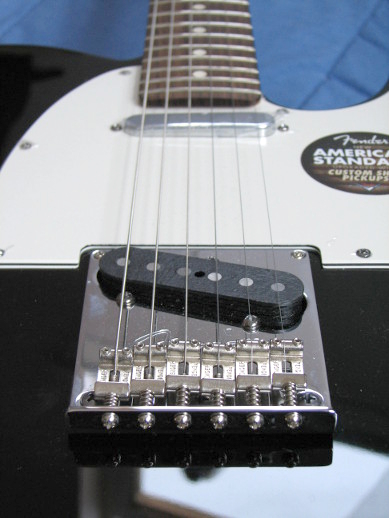
Now, I've read all this bluster on forums about Teles being "brutally honest, demanding instruments that make you work for your music," so I was a bit surprised to find that this one was easy to play and to get sounds I wanted from. Bending was much easier on the Tele than on a soft-tailed strat and the tactile difference between Gibson scale and Fender scale was much less apparent on the Tele than the Strat. The guitar has what Fender refers to as a "Custom Shop Broadcaster" bridge pickup, alluding to the original name and earliest period of the Tele, and a "Custom Shop Twisted Tele" neck pickup. I wonder if that "Twisted" refers to the neck pickup being reverse-wound? It might just - in the middle pickup selector position there seems to be some hum cancellation going on. It also has Fender's "No Load" Delta Tone Control. I had become familiar with this feature when I was evaluating the American Standard Stratocasters a couple of years ago. The tone control acts fairly normally until you open it up fully. At that end of its travel, the knob drops vertically into a gentle little detent and, according to Fender, the guitar acts as though the tone control weren't there at all. Now, this particular guitar wasn't anything to write home about in the looks department, being solid black with a three-ply parchment guard, about as plain jane as they come, so you know it had to be the sound and feel that got my attention. A forumite called it "elegant." That's pleasant.
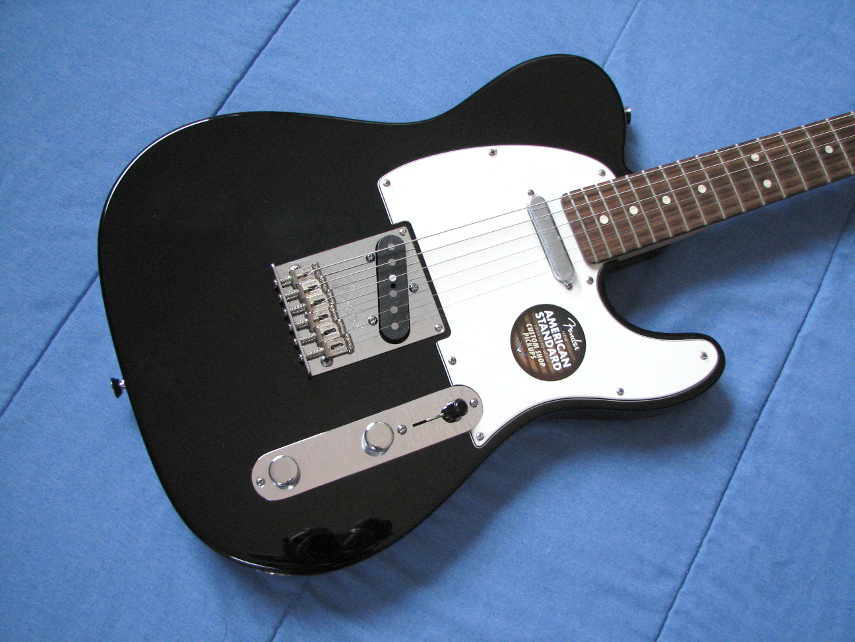
I was in the period I call "visiting." That is where I know I'm attracted to an instrument but I'm trying to make up my so-called mind, so I go visit it in the store several times. I tend to take my time with a new guitar: If someone else buys the guitar first it just helps me make up my mind. The sales staff had been joking me, saying, "Yeah, we've seen you sniffing around the Teles," and had begun prodding me to get a price quote from the manager. I don't typically do that until I'm serious and ready to pony up the pesos because I don't want to waste anyone's time. Then one day I realized that I'd never used a tuner to make sure the thing was tuned up to concert pitch. You really need to do that to make sure all this lovely sound and slinky feel-goodness isn't just an illusion created by the guitar having worked itself down by a half-step or so while being played in the shop. So I asked my wife if we could drop by and check that out and she was kind enough to oblige. Sure enough, the guitar was at concert pitch and the great slinky feeling and sound were there. Right about then my lovely wife said, "You've been looking at this thing for a while now. Get a quote," and so I finally did. The manager took a few minutes to dial it up and came back with a pretty killer deal. That's all it took. My wife slapped down the card and said, "Sold." Whoa. I guess my mind was made up.
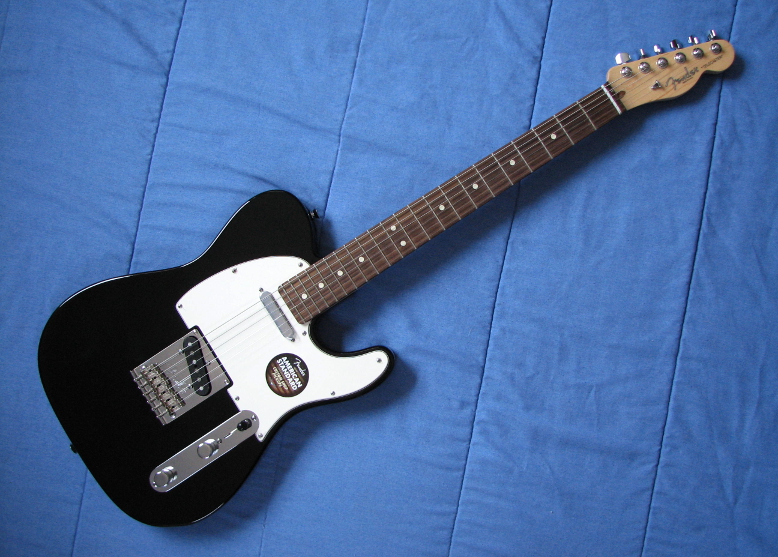
So next came learning to "drive" the thing with my own amps. You know what I mean: each guitar/amp combo needs some fiddling to 'bring the magic.' Of course, with the guitar's knobs spun up to full, all the nice, chimey clean stuff like Pink Floyd's "Run Like Hell" and 10,000 Manics cover of "More Than This" drops right out of it. The guitar does enjoy a bit of compression to tame the attack. It sounds to me like teles are significantly brighter than strats when you wind both of 'em out. But when you tire of driving with the pedal to the boards you'll find out that you can back off the treble and get a more muscular sound as well. In fact, that's where the magic really occurs with the Tele. Between backing off the tone control and the volume control there is a broad range of usable control settings available that yield a broad swath of great tones. The guitar plays really nicely with the '50s Fender 5E3 Deluxe Amp and later Deluxe Reverbs, but no surprise there - what do you reckon Leo was working with when he designed those amps? The '73 Traynor Reverb Master loves the guitar, too. Now I'm gaining up to various levels to see what the various amps like. The brightness and overtones tend to saturate the high-end much more quickly than a humbucker-equipped guitar or even a strat so you learn to adjust by pulling back the tone control. With the tone about half-way down and the volume at three-quarters, the guitar begins to really show its qualities. Slight changes to tone and volume open up whole new worlds of sound. Ahhhh... Once you find the velvety zone, push the tone up and the guitar wails, pull it back and it moans. The "magic" with this guitar is obtained by restraint and is embodied by nuance. That really reminds me a bit of the Gibson ES-335, which often needs its bridge pickup tamed a bit in the same way. Shifting your picking location also yields pretty strong changes
in sound as well.
So, it took a couple of weeks but my hands acclimated and began to "fly" on the fretboard with little thought or effort. After the honeymoon and some learning I really began to "get it," both becoming at home with the fingerboard and learning how to manipulate the controls to get a fuller benefit from the guitar's many sounds. I can say that I'm really glad my wife kicked my hindquarters to add this one to my arsenal. And funny thing about guitars: it arrived just in time. I recently had a job where I needed that Tele sound for chording and solos and it came in right handy. How about a little clip of an OUTRO SOLO ?
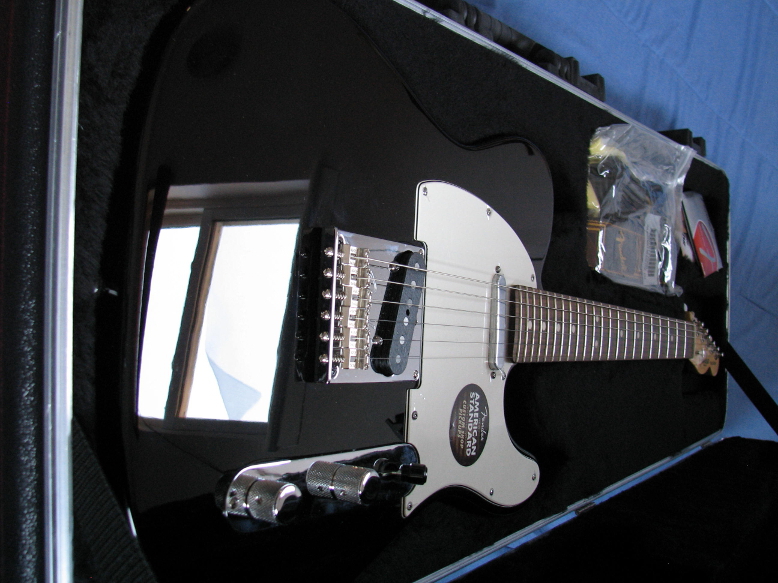
THE COLD HARD FACTS:
American Standard Telecaster, 2013, Black
Body Material: Alder
Body Finish: Urethane
Neck Material: Maple
Fingerboard: Rosewood
Neck Finish: Satin Urethane Finish on Back of Neck with Gloss Urethane Headstock Face
Pickguard: 3-Ply Parchment
Neck Shape: Modern "C"
Scale Length: 25.5" (648 mm)
Nut Width: 1.685" (42.8 mm)
Fingerboard Radius: 9.5" (241 mm)
Number of Frets: 22
Fret Size: Medium Jumbo
Bridge Pickup: Custom Shop Single-Coil Broadcaster
Neck Pickup: Custom Shop "Twisted" Single-Coil Tele
Controls: Master Volume, Master Delta Tone™
Special Electronics: No-Load Tone Control
Bridge: 6-Saddle American Standard Strings-Through-Body Tele with Bent Steel Saddles and Stamped Brass Plate
Unique Features: Five-Screw Mounted Brass Bridge Plate for Sonic Stability, Loaded with Improved Bent Steel Saddles with Elongated String Slots, for Increased Resonance and Sustain, Thinner Undercoat Finish for Improved Body Resonance, Tinted Neck, Body Contour
Case: injection-molded rectangular
Also includes lots of nifty case candy: adjustment tools, polish cloth, hang tags, guitar cord, Fender strap.
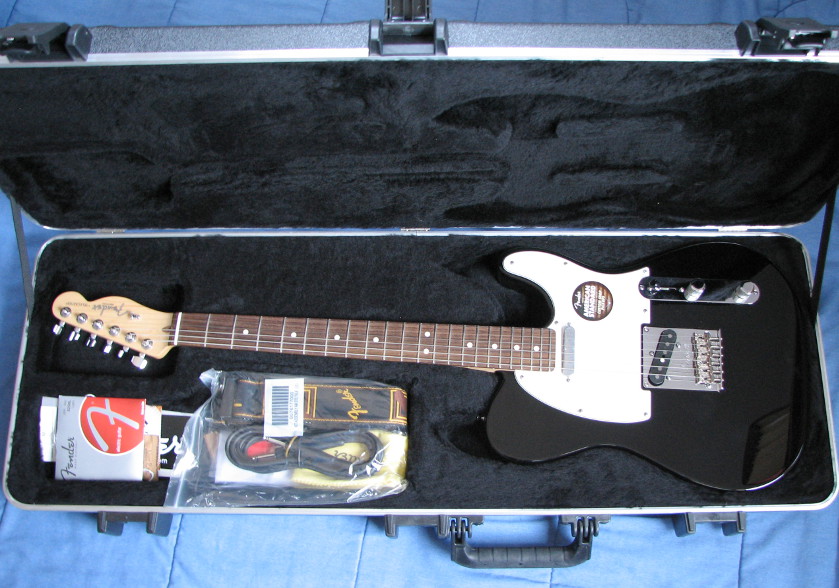
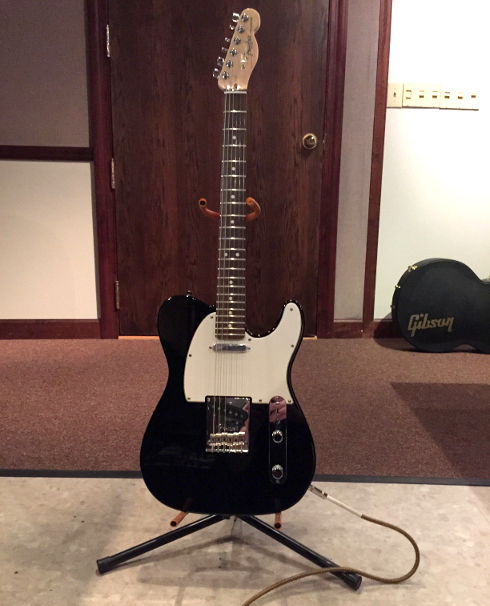
= =
=







